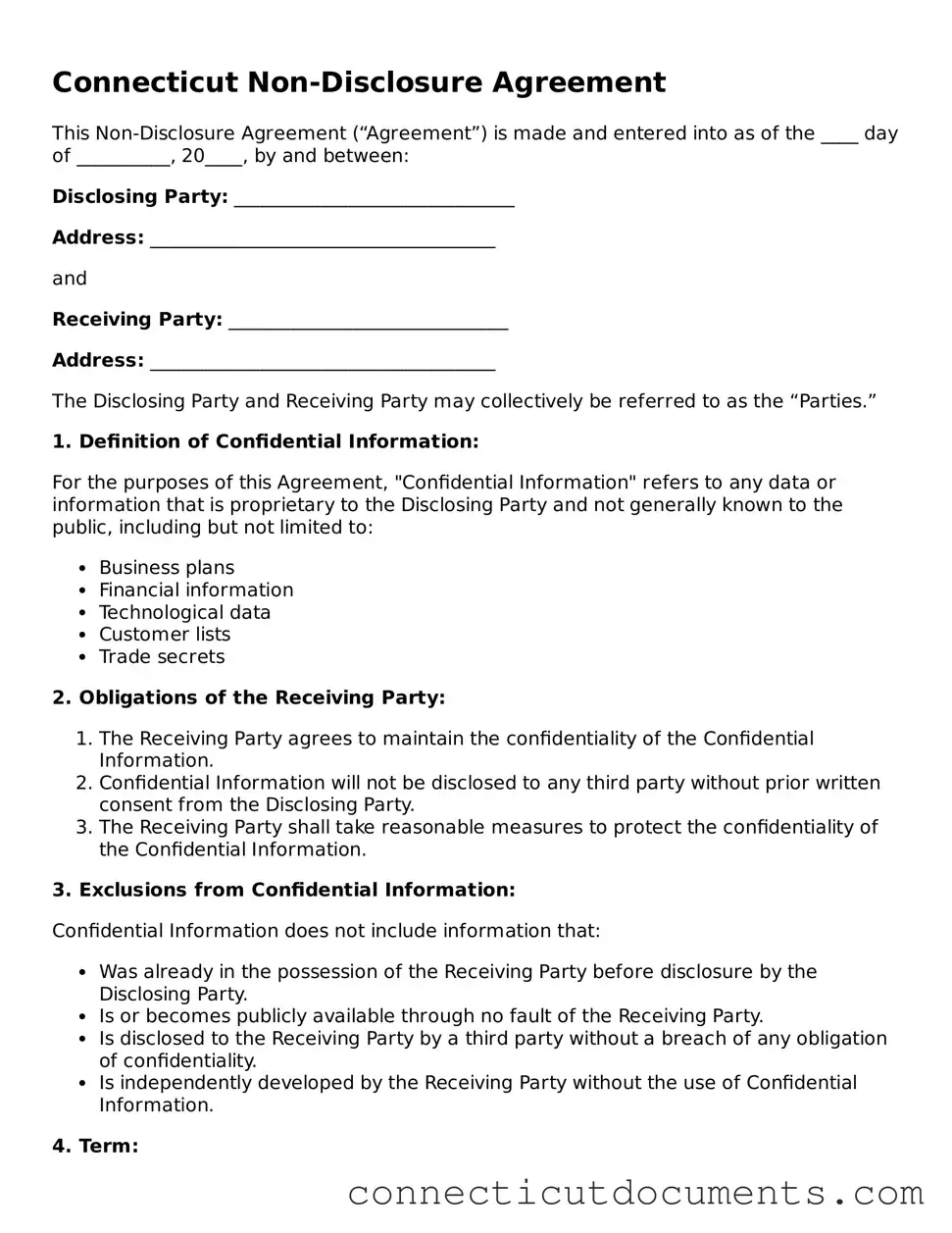What is a Non-disclosure Agreement (NDA)?
A Non-disclosure Agreement, commonly referred to as an NDA, is a legally binding contract that establishes a confidential relationship between parties. It is designed to protect sensitive information from being disclosed to unauthorized individuals. NDAs are often used in business settings to safeguard trade secrets, proprietary information, or any other confidential data that one party may share with another.
Why would someone need a Connecticut Non-disclosure Agreement?
A Connecticut Non-disclosure Agreement is essential for individuals or businesses that wish to protect their confidential information. This could include trade secrets, client lists, financial data, or product designs. By using an NDA, parties can ensure that their sensitive information remains private, which can be crucial for maintaining a competitive advantage in the market.
Who can enter into a Non-disclosure Agreement in Connecticut?
Any individual or business entity can enter into a Non-disclosure Agreement in Connecticut. This includes companies, freelancers, and independent contractors. Both parties must agree to the terms of the NDA for it to be enforceable. It is important that all parties involved fully understand their obligations under the agreement.
What are the key components of a Connecticut Non-disclosure Agreement?
A typical Non-disclosure Agreement includes several important components: a definition of what constitutes confidential information, the obligations of the receiving party to protect that information, the duration of confidentiality, and any exclusions from confidentiality. Additionally, it may outline the consequences for breaching the agreement.
How long does the confidentiality obligation last under a Connecticut NDA?
The duration of the confidentiality obligation can vary depending on the terms specified in the NDA. Some agreements may state that the obligation lasts for a specific number of years, while others may extend indefinitely until the information becomes publicly available or is no longer considered confidential. It is crucial to clearly define this duration in the agreement.
Can a Non-disclosure Agreement be enforced in Connecticut?
Yes, a Non-disclosure Agreement can be enforced in Connecticut as long as it meets the necessary legal requirements. If one party breaches the agreement, the other party may seek legal remedies, which could include monetary damages or injunctive relief. However, the enforceability may depend on the clarity of the terms and the circumstances surrounding the agreement.
Are there any limitations to what can be protected under an NDA?
Yes, there are limitations to what can be protected under a Non-disclosure Agreement. Information that is already publicly known, independently developed, or required to be disclosed by law typically cannot be protected. Additionally, if the receiving party can prove that they obtained the information through legitimate means, the NDA may not apply.
How can someone create a Non-disclosure Agreement in Connecticut?
Creating a Non-disclosure Agreement in Connecticut can be done using templates available online or by consulting with a legal professional. It is important to customize the agreement to fit the specific needs of the parties involved. Clear language and detailed terms will help ensure that the NDA effectively protects the confidential information being shared.
